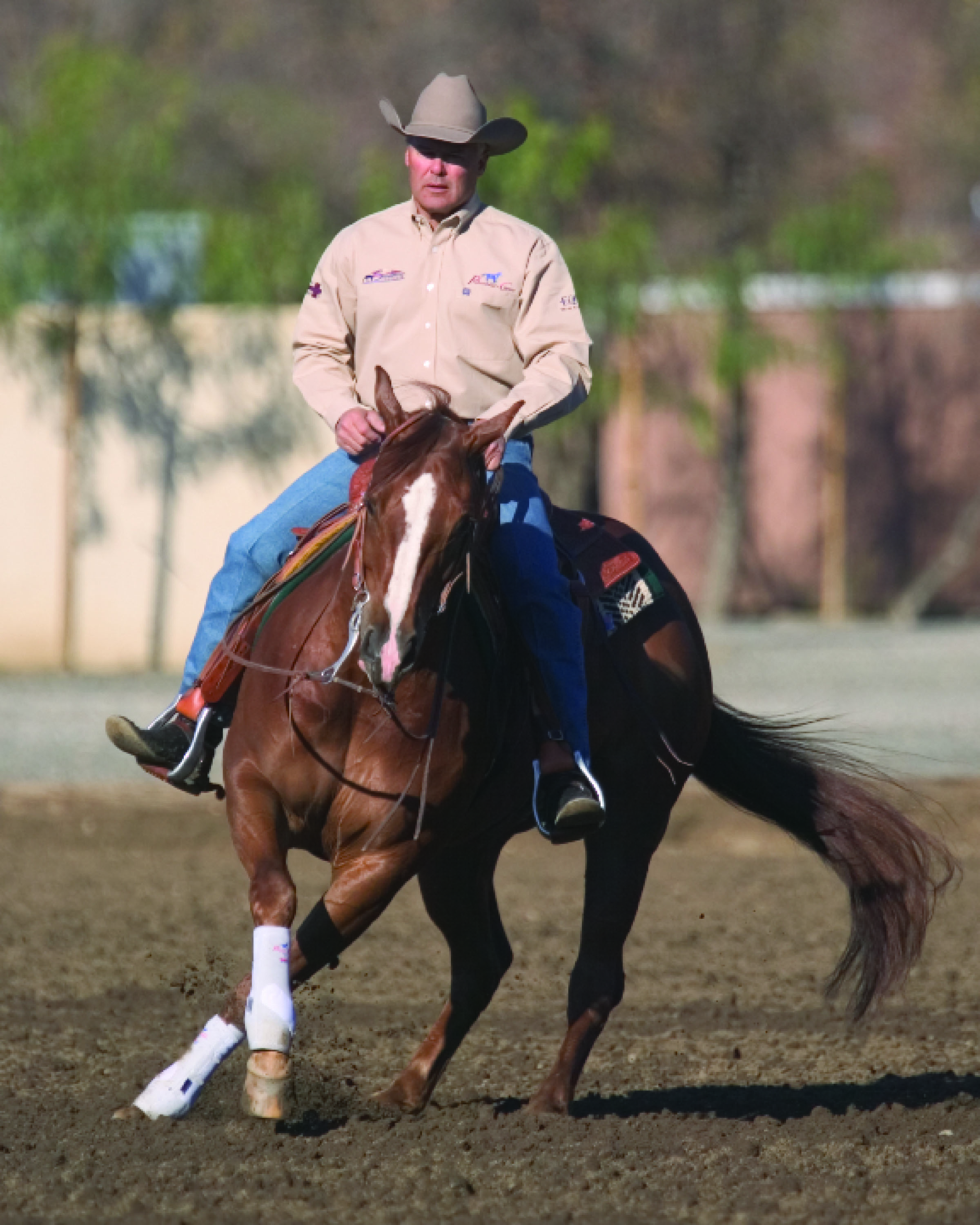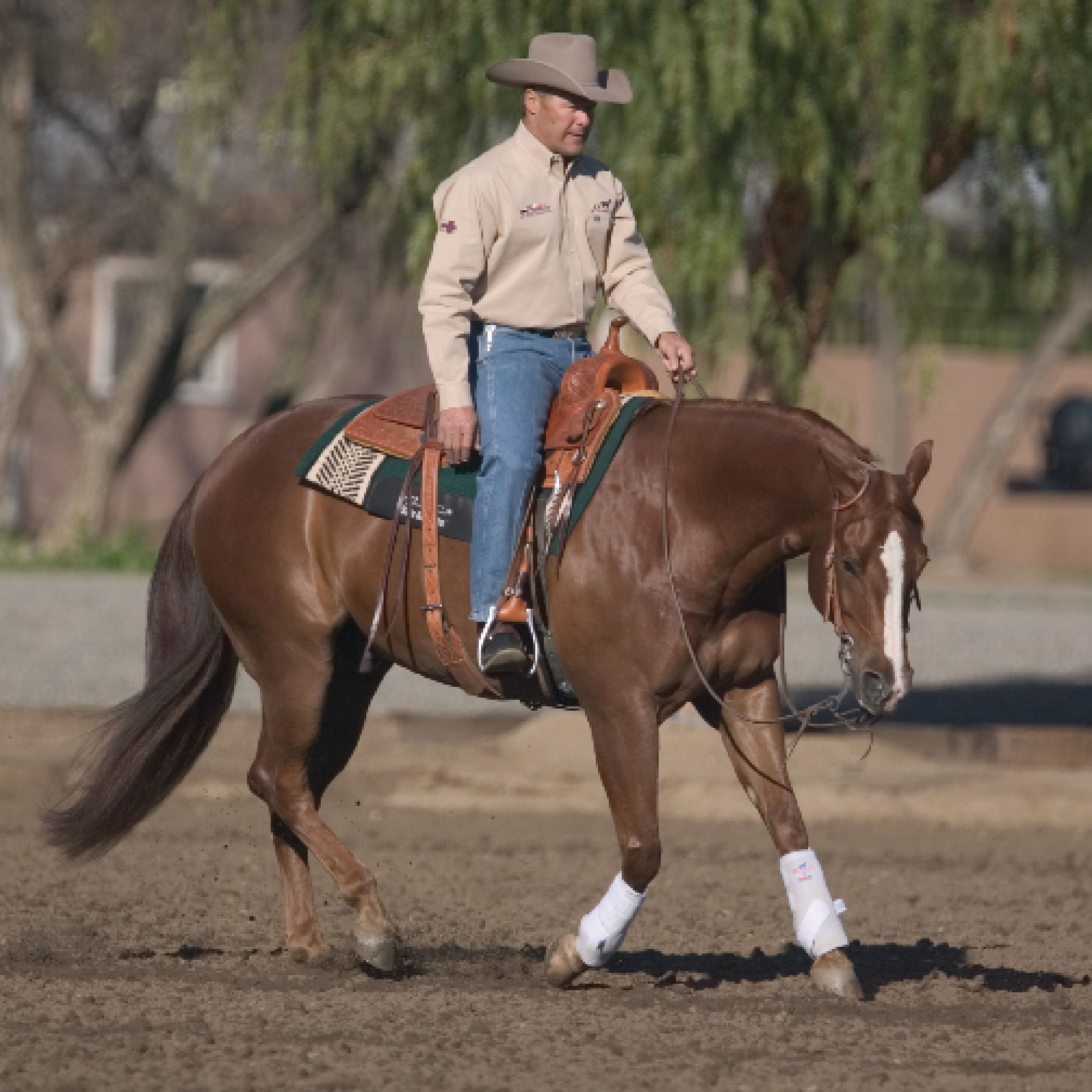A good older show horse is like a handful of gold: Once you lose it, it’s hard to find another one. All too often I see seasoned campaigners inadvertently burned out mentally or physically. It’s a shame for the horse, and a shame for his rider.
I have older horses in my barn that remain top performers. The youngest is eight years old; the other three are in the double digits, age-wise. Two are world champions, and one has won a national honor roll title. These horses know their jobs, and are terrific schoolmasters for the amateurs who ride them. I treat each of them like that handful of gold, because I know they’d be tough to replace.
Here are my recommendations for making sure your older performance horse keeps on keepin’ on for as long as possible.

Training
Don’t keep drilling him. Chances are, a seasoned horse knows his job—and well. Your goal is to keep him mentally fresh, and physically fit (more about that in a minute). To do so, avoid drilling on the same maneuvers day after day. That would be like trying to teach a bus driver how to drive every time he shows up at work. He knows how to drive. All you’d do is make him mad.
Keep him fit. Rather than constantly training on your seasoned horse, keep him fit by loping him. You don’t want him so fit that he’s too fresh, but you do want him fit enough to keep his muscles and soft-tissues in shape, reducing the risk of injury. If you have access to an equine swimming facility, incorporate that into your fitness program. Swimming can help keep a horse fit without the impact-related wear-and-tear of dry-land workouts. (If you’re unsure about a good fitness program for your horse, consult a reputable trainer, and/or a good performance horse vet.)
Change things up. To keep your horse mentally fresh, change up his work. Follow cattle around, if you have them. Allowing your horse to follow a steer around in a pen enables you to tune him up and leg him up, while giving him something tangible (and fun) to do. Pony him or ride him out on the trails. We regularly pony our “old-timers” out on the hills behind our facility. They love it—and it helps keep them fit.

Management
Turn him out. I’m a big believer in the benefits of turnout. All the horses in our barn are turned out regularly. That gives them a chance to relax, which is good for their brains. It also helps keep a horse fit. I think you take longevity away when you lock one in a stall—especially if you work the horse infrequently. If a horse stands in a stall for a day or two (or longer), then is dragged out and worked hard, you’re begging for an injury.
Invest in smart maintenance. Work with your veterinarian to develop a maintenance program tailored to your older horse’s needs. That may include occasional joint injections, and regular administration of such joint-health products as Legend or Adequan. The horses in our barn get Legend every 30 days. I have them checked over from head to tail by a top performance-horse veterinarian twice a year, whether they need it or not. Every penny I put into their maintenance pays off in performance longevity.
Feed him right. Work with your veterinarian and/ or trainer to develop a nutrition program that’s right for your horse. Invest in top-quality hay and/or alfalfa, plus grain, if your horse needs it. The higher the quality of your feed, the easier it’ll be for your horse to digest and utilize. That translates into better health and performance in the long run.
Showing
Plan ahead for shows. If you have a show coming up, build your horse up for it, rather than trying to keep him at his “show peak” year-round. (No horse can maintain a peak long-term without burning out mentally and/or physically.) For a weekend show, start preparing your horse at least a week ahead of time. While your everyday fitness program should have him in shape, ride him a bit harder and longer, and practice some show-specific maneuvers. For instance, on a reiner, I’ll start stopping and turning one around about a week ahead of a local show.
If you’re going to a major show, begin your prep work about 30 to 60 days beforehand, depending on the horse. Design your program such that your horse peaks at the show—not before. (If you need help with a program, consult a reputable trainer.)
Be show-savvy. Choose your shows and events carefully, and avoid showing in too many classes, or at shows with poor footing. For instance, I don’t show our older amateur horses in the open events, to reduce their class load. Sure, it would be fun—these horses are broke and know how to win. But I want them to last for their amateur riders. So I’ll help keep them tuned up and fit, but only the amateurs show them.
Beware performance anxiety. Seasoned show horses are more apt than less experienced ones to get anxious about going into the show pen. Anxiety can lead to burnout. That applies whether you show reiners, barrel racers, hunters, or halter horses—it happens in every event. To help avoid performance anxiety at shows, take your veteran to the occasional schooling event and go easy on him in the show pen. That way, he doesn’t think he has to run (or work) for his life every time he goes through the in-gate. At larger shows, I may let an amateur show her campaigner, then I’ll take the horse in an all-ages class (or something similar), and just let him chill out. The message? He can relax in the show ring. (Schooling an older horse is an art unto itself, and a topic to which I’ll devote a future column.)
Follow these guidelines, and enjoy the payoff: The opportunity to ride and show your veteran for the long haul. Now that’s a win-win situation.
MORE FOR OLDER HORSES
Straight From the (Old) Horse’s Mouth






